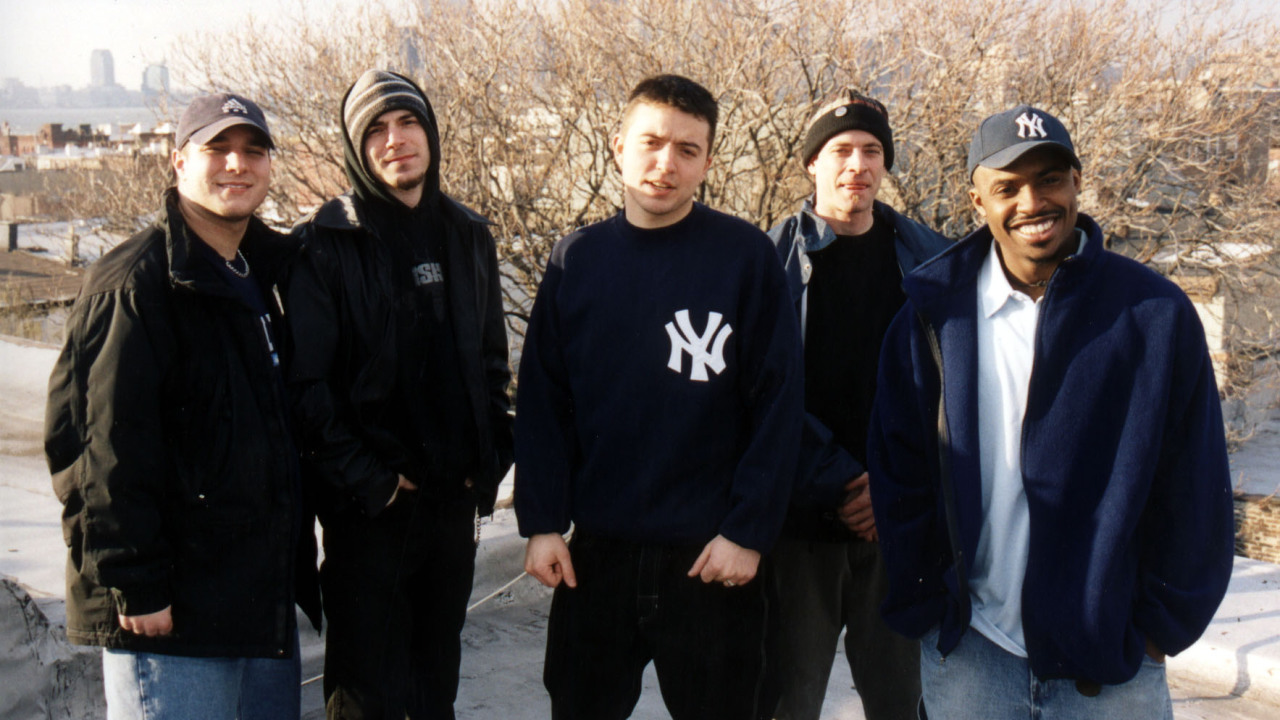In 2015 we’re more than used to the sound of wild jazz and polyrhythmic virtuosity creeping into the metal scene. The increase in the popularity of prog and the underground influence of djent has meant that many of the bands that helped to re-popularise these styles in the early noughties are now considered legends. From the continued acceptance of The Dillinger Escape Plan into more mainstream territories, to Meshuggah sitting atop the unlikely pedestal of ‘godfather’s of djent’, and Sikth’s return leading to scenes of pure joy, it seems the most challenging bands of that era are finally getting their dues… except one.
Hailing from New York, and its eclectic music landscape, Candiria appear to be the pioneering masters of technically complex, jarringly heavy and uniquely single-minded music that the world forgot. Formed by vocalist Carley Coma, drummer Kenneth Schalk and guitarists Chris Puma and Eric Matthews in 1992, Candiria were determined to stand out from the crowd from day one. They described their music as ‘urban fusion’ and borrowed from Herbie Hancock or Eric B And Rakim as heavily as they did Pantera or Metallica. The result was three albums (1995’s Surrealist Madness, 1997’s Beyond Reasonable Doubt and 1999’s The Process Of Self Development) that were completely alien to the metal landscape at that time, if a little patchy and not quite up to par with the ideas in their head.
It all came together with 2001’s 300 Per Cent Density, which featured new bassist Michael MacIvor and John Lamacchia replacing Puma on guitar. From the smooth jazz horns that usher in Constant Velocity Is As Natural As Being At Rest to the street level hip-hop of Words From The Lexicon, the thick, almost impenetrable, staccato riffs of the title track and a xylophone solo beatdown(!) on The Obvious Destination, it remains one of the best and most original records of its time. It also gained Candiria a patronage from the likes of Clutch and Raging Speedhorn (who had the band open for them on a UK tour).
After making waves as an oddity amongst an increasingly sterile, puerile and tired nu-metal obsessed metal scene, the stage was set for Candiria to do take their sonic attack up a notch. They released The Coma Imprint a year later, a double album of previous material reworked on one disc and an EP of pure hip-hop on the other, before follow-up album What Doesn’t Kill You… arrived in 2004.
The album’s cover art showed the wreckage of the band’s van after a near fatal crash whilst touring The Coma Imprint and the music within was an obvious step away from Candiria’s more extreme leanings, concentrating on channelling their melodic, straight-forward passages, much to the hardcore fanbase’s disapproval. The crossover that they hoped for never materialised, and the chaste fans of old began to dwindle.
After a period of inactivity, one more album, Kiss The Lie, was released in 2009 and members quit, or returned, or both in the intervening years. However after a string of sporadic live dates, Candiria have promised new material and a first album in six years.
Whether they can reach the creative heights of 15 years ago is yet to be seen. But one thing is for sure; there’s a whole movement of progressive, freethinking bands – from Periphery to Between The Buried And Me – that benefitted from Candiria chipping away at the mainstream rock world. Now, like TDEP, Meshuggah and Sikth before them, maybe it’s finally time to give them their dues.

